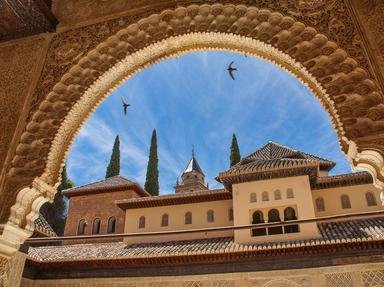Quiz Answer Key and Fun Facts
1. Home to one of the best preserved Roman aqueducts.
2. Birthplace of Pablo Picasso.
3. Hosted the 1992 Summer Olympics.
4. Famous for the 'La Tomatina' festival.
5. Setting for Ernest Hemingway's "The Sun Also Rises".
6. Known as the "City of the Three Cultures".
7. Spanish Constitution of 1812 was ratified here.
8. Site of the unique Mezquite-Catedral (or Mosque-Cathedral).
9. Part of the "Pueblos Blancos" (White Villages of Andalucia)
10. Official motto is NO8DO.
11. Subject of a painting by Pablo Picasso.
12. Gave its name to a type of orange.
13. Last Muslim Emirate to be reconquered by the Christians.
14. Called Donostia in Basque.
15. All radial roads in Spain start from Kilometre 0 in this city.
Source: Author
zorba_scank
This quiz was reviewed by FunTrivia editor
agony before going online.
Any errors found in FunTrivia content are routinely corrected through our feedback system.

